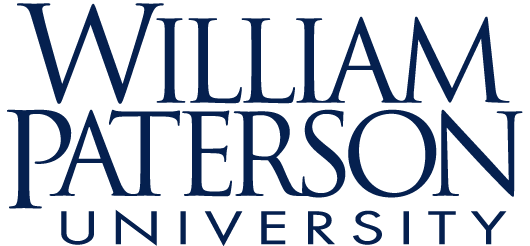reparation and communication are essential to survival theme of second conference about state’s disaster and economic development strategy sponsored by NJSBDC network and USRP

Contact:
Jody Calendar
(973) 353-1927 or (732) 245-9181
International and local panelists practiced real life scenarios with officials and business leaders to help prepare them for the next disaster on second anniversary of Super Storm Sandy
November 5, 2014 (Lakewood, NJ) – It’s every business owner’s responsibility to prepare for a disaster because, in reality, neither government nor anyone else may be there to help.
That’s reality. Ask any small business directly hit by Super Storm Sandy. And that’s just one of the many possible disasters.
Preparedness entails preparing a comprehensive continuity plan that addresses any catastrophic event with protocols clearly communicated to managers and staff alike and is practiced time in and time out in real life scenarios was the theme of the second day-long conference at the Woodlake Country Club, here, sponsored by the New Jersey Small Business Centers network, the U.S. Resilience Project and funded by the Small Business Administration.
Sound like too much to do? Then think again.
Held on the second anniversary of Super Storm Sandy, the workshop “Putting the How-to in Resilience” was an illuminating hands-on workshop lead by an international facilitator, Nathaniel Forbes, who hails from Singapore “the most disaster prone area in the world” and it became clear in snap polling at the conference that most of the audience seemed lacking in preparedness.
But by the time they left, many were eager to implement what they learned.
Super Storm Sandy was an” unbelievable tragedy…and all those things we couldn’t imagine but out of that tragedy there was rebuilding and this program today – resilience,” said Brenda Hopper, Chief Executive Officer and State Director of the NJSBDC network. The conference was focused on providing the tools so businesses and communities never again face this level of adversity.
Jackeline Meijas-Fuertes, Regional Director of the NJSBDC at Brookdale Community College, stressed that resiliency planning isn’t mysterious but solid planning that is necessary and her center is there to help.
Fuertes, who was instrumental with her team at Brookdale in formulating the conference, stressed that she and her expert team can guide businesses in developing a contingency plan.
Ms. Hopper said Fuertes had “her boots on the ground” immediately after Sandy and went door to door and held regional meetings and provided as much information about how she could help and Fuertes said once you’ve been through something like Super Storm Sandy you learn how to be resilient.
Her fear is that small business owners will not heed the warning that another disaster may be around the corner and they won’t be prepared.
Forbes joined with Tony McDonald, director of the Urban Coast Institute at Monmouth University and representatives of Verizon, JCP&L and New Jersey Natural Gas, to explain the gravity of the situation and what could be done to survive the next catastrophe and to actually turn it around into an opportunity to increase business. To do that, businesses and companies need tools to make them resilient to the volatility of disasters and to learn to leverage resources through partnerships, all of which are key to survival, recovery and advancement.
In case anyone at the conference had doubts about the gravity, Forbes referred to the nuclear meltdown in Japan and what happened there and noted there are 280 power plants on the coast line in the United States.
The good news is that if businesses join with the communities they service and develop contingency plans that are clearly articulated and involve businesses, local government, schools, and non-profit agencies, success is guaranteed. But it’s critical they brainstorm plans that address transportation, sanitation, electricity, other energy sources, and water. Then there are the needs of employees, customers, suppliers, stakeholders and most importantly, families to consider. Then toss in retail, services, manufacturing and public safety concerns that impact schools, hospitals, private property and public transportation.
Forbes gave a striking example of what can happen when this is not done. He said the North Ward of New Orleans was devastated by Katrina, the most costly storm, although Sandy was many times larger, and that district has been abandoned because everyone has given up. No one would help.
“If we are willing to give up on New Orleans, than what else are we willing to abandon? How about water in the west? In Las Vegas, which is a dessert?” Forbes asked. “Another disaster is going to happen and the government won’t be there. It’s true…the question is ‘What can I do to protect myself?’ That’s the question you must ask.”
Bob Klemme, Associate Director, Business Continuity/Disaster Recovery, Verizon Wireless, said regional teams at Verizon who are locally based repeatedly practice so everyone understands the plan and how it should be executed in each Verizon office if a disaster should strike.
Verizon has 250 preparedness plans and 15 to 20 events a year to keep process and practical application available at the fore front with communication. He told businesses to pursue things as simple as car chargers to help in a disaster as well as jet packs, wireless priority service and wireless backup routers.
Rae Mallin, Manager, Emergency Preparedness, Jersey Central Power & Light, said the utility lost 1.1 million customers in 2011 when Irene struck, and 375,000 six weeks later in the October storm but, he said, all their customers were lost as a result of Sandy.
“Sandy was so large we had a snow event in Virginia,” he said. “Katrina was the most costly and Sandy the second but Sandy devastated a larger area.”
The company, partnering with the Department of Energy, brought in 8,500 people over a week’s time from 36 states, some as far away as California and Oregon.
He urged businesses during the next outage to go to firstenergy.com and click on the outage map to track estimated time and status of crew, and businesses can go to the app on their smart phone.
Bill Wells, Director of Operations at New Jew Jersey Natural Gas, said the utility has about 500,000 customers in Monmouth, Ocean, Morris and Somerset Counties and disruption is rare but when it happens it’s protracted and it takes at least eight weeks to restore to be safe.
Businesses need to take this into account in their contingency and business plans, Forbes said.
During Sandy, Wells said, the utility lost 30,000 customers on the Sea Bright peninsula, Manasquan, the Seaside peninsula and all of Long Beach Island. And the company had never seen anything like it.
He urged residents to look for anyone trying to dig around a gas line and notify NJNG immediately if any disruptions occur. They consider safety first and will respond as soon as possible.
Participants enjoyed the conference and walked away better informed and eager to plan.
“I want to stress I believe we need community based planning. We are all connected and in case of disaster,” said Gwendolyn Love, director of Lunch Break, Red Bank., a non-profit that feeds and houses those in need. “We need to coordinate our efforts, as a true community.”
Aaron Levine, of LG Insurance Group, agreed.
“I’m a professional insurance agent and this will help me complete my business contingency plan and to help my customers set up theirs. It is so important to be prepared for success and disaster and this workshop set the groundwork for that.”
“Our first resilience seminar was held in Essex County back in September,” said NJSBDC Chief Operating Officer/Associate State Director. “We learned many lessons from that event, and, in counties like Monmouth/Ocean where disaster really struck hard, this event offered business owners even more insights and conversations on how to develop an offensive plan so you don’t have to play defense when disaster strikes.”
Jackeline Meijas-Fuertes, Regional Director of the NJSBDC at Brookdale Community College, put together the majority of the conference with members of her “Center” team and other representatives from NJSBDC headquarters and USRP.
Since disruptions come in all sizes and flavors, there are all sets of tools and strategies that Ms. Meijas-Fuertes can provide that leave companies poised to adjust to turbulence. Contact her at your local NJSBDC at Brookdale Community College for guidance.
About America’s SBDC New Jersey (NJSBDC)
The New Jersey Small Business Development Centers network, also known as America’s SBDC New Jersey, provides comprehensive services and programs for small businesses in New Jersey, helping businesses expand their operations, manage their growth in New Jersey, helping businesses expand their operations, manage their growth, or start new ventures. Expert staff and practicing business consultants help small business owners and entrepreneurs to develop business plans, find financing, identify new markets, find procurement and international trade opportunities, commercialize technology and develop an E-commerce presence. This non-profit network is a federal-state-educational partnership, leveraging public and private funding sources to further maximize resources for the small business community. The network leverages funding from the Small Business Administration (SBA), New Jersey Business Action Center, the educational institutions that host the 12 centers as well as other private sponsorships and grants. The NJSBDC Headquarters is located at the Rutgers Business School in Newark, NJ. The NJSBDC network is an accredited member of the National Association of Small Business Development Centers (ASBDC). More than 1,000 centers and satellite offices serve small businesses across the country. Visit www.njsbdc.com.


















